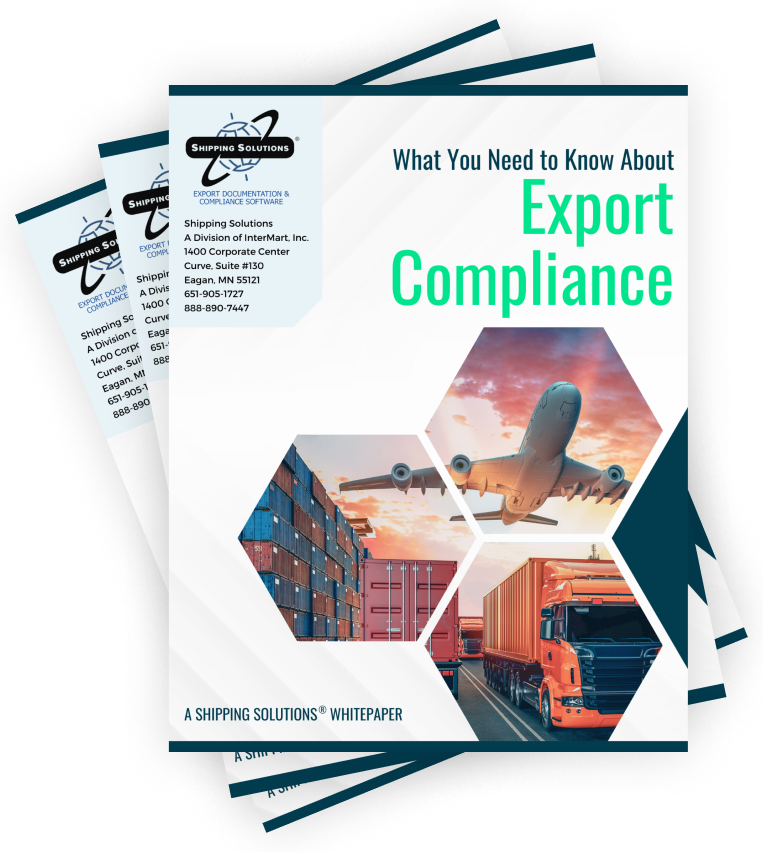The International Trade Blog Export Compliance
No Bull: Export Compliance Means Watching for Red Flags
On: March 1, 2021 | By:  David Noah |
7 min. read
David Noah |
7 min. read
 If your idea of a red flag revolves around a conquistador and a bull, I hate to tell you this—the myth that bulls charge at red flags has been debunked. (In the popular series Mythbusters, it was proven that the bull is actually lured by the waving of the flag more than the color.)
If your idea of a red flag revolves around a conquistador and a bull, I hate to tell you this—the myth that bulls charge at red flags has been debunked. (In the popular series Mythbusters, it was proven that the bull is actually lured by the waving of the flag more than the color.)
So, if bullfighters don’t need to worry about red flags, who does?
You do.
Exporters, you must know what a red flag is, why it’s important and what U.S. export regulations say your responsibilities are regarding red flags. We can help.
Defining a Red Flag
Red flags are defined by the Export Administration Regulations (EAR) as “any abnormal circumstances in a transaction that indicate that the export may be destined for an inappropriate end-use, end-user or destination.”
If you have a bad gut feeling, a doubt or even a question—that’s a sign you need to continue to pull on the thread of suspicion and see what unravels.
What Are Red Flag Indicators?
Because every export process, shipper, customer and situation is unique, there is no single complete list of red flag indicators. There are, however, several ways to identify red flags.
The Bureau of Industry and Security (BIS) identifies the following as red flag indicators:
- A customer or customer’s address is similar to one of the parties found on the Commerce Department's (BIS's) list of denied persons.
- A customer or purchasing agent is reluctant to offer information about the end use of an item.
- A product's capabilities do not fit the buyer's line of business; for example, a small bakery places an order for sophisticated computers.
- An item ordered is incompatible with the technical level of the country to which it is being shipped, such as semiconductor manufacturing equipment being shipped to a country with no electronics industry.
- A customer is willing to pay cash for a very expensive item when the terms of sale would normally call for financing.
- A customer has little or no business background.
- A customer is unfamiliar with the product's performance characteristics but still wants it.
- A customer declines routine installation, training or maintenance services.
- Delivery dates are vague, or deliveries are planned for out-of-the-way destinations.
- A freight forwarding firm is listed as the product's final destination.
- The shipping route is abnormal for the product and destination.
- Packaging is inconsistent with the stated method of shipment or destination.
- When questioned, the buyer is evasive and especially unclear about whether the purchased product is for domestic use, for export or for reexport.
I can’t emphasize this enough—this list of red flags is not all-inclusive. As the Bureau of Industry and Security (BIS) states, it is “intended to illustrate the types of circumstances that should cause reasonable suspicion that a transaction will violate the EAR.”
When Do Red Flags Appear?
You may be wondering when you would notice a red flag in the export controls process. A red flag may come up at any time—early in an export transaction, when you’re filling out the requisite paperwork, when you’re finalizing sales invoices. It’s important to be vigilant and pay attention to red flags all the time: from introductions to after the sale has been completed.
In addition to red flags, exporters also need to be aware of the parties they are prohibited or restricted from shipping to, as well as BIS's Unverified List “of parties whose bona fides BIS has been unable to determine in end-use checks.”
You can find more about both of these groups in my blog post, Checking Lists Isn't Enough for Export Compliance... Here's Why.
What You Should Do If You Encounter a Red Flag
If there are no red flags, proceed with your business. However, if you’re suspicious, the BIS says this:
When "Red Flags" are raised in the information that comes to your firm, you have a duty to exercise due diligence to inquire regarding the suspicious circumstances and ensure appropriate end-use, end-user or ultimate country of destination in the transactions you propose to engage in.
Here’s what you should do:
1. Don’t Self Blind
Self blinding is a term the U.S. government uses that essentially means ignoring the warning signs of a potential export. The BIS website gives the following advice on the idea of self blinding:
- Don’t cut off the flow of information that comes to your business normally.
For example, don’t instruct your sales team to tell potential customers to stop discussing the end use, end user and ultimate country of destination for the product your company wants to sell. - Don’t put on blinders that prevent you from learning relevant information about your (potential) customers.
According to the BIS, “an affirmative policy of steps to avoid bad information would not insulate a company from liability, and it would usually be considered an aggravating factor in an enforcement proceeding.” Ignorance is not bliss—and not knowing what’s going on won’t protect you from the ramifications of your participation in illegal transactions. - Make sure your employees know how to handle red flags.
What your employees know can be imputed to your company and make it liable for a violation. This is why it is so critical for every business to establish clear, written policies and compliance procedures; it ensures that such knowledge about transactions can be evaluated by responsible parties. Failure to do this could be regarded as a form of self blinding.
2. Put the Transaction On Hold and Make the Necessary Inquiries
If you encounter a red flag, you immediately need to stop proceeding with the transaction and begin investigating. If your company has an export compliance official or team, now is the time to bring them up to speed with what you've found. And then someone at your company needs to start asking questions.
Interview all the parties in your transaction that have some connection to the red flag you've identified. Ask the relevant questions. For example: Why is the customer not telling you what they intend to do with the product? Why are we shipping to a foreign freight forwarder rather than the customer's warehouse? Why has the customer chosen such an unusual payment method.
3. After the Inquiry, Reevaluate the Information
Once you've dug into the transaction and asked all the questions related to the red flag that you need to ask, someone at your company needs to determine whether the red flag is explainable or justified. If you can explain away the red flag, the BIS says you can proceed with the transaction. However, if the red flag can’t be explained or justified and you proceed, you risk having knowledge that would make your action a violation of the EAR.
4. Stop the Transaction, Disclose the Information to BIS, and Wait
If you continue to have reason for concern after the inquiry, you should either refrain the transaction or submit all the relevant information to BIS as an application for an export license or other form.
If you have any question about whether you have encountered a red flag, you should contact the Office of Export Enforcement or use their confidential enforcement lead/tip form to submit a tip. You can also report any a violation you believe may be taking place or has occurred to the Department of Commerce hotline: (800) 424-2980.
The Bottom Line
It is the the exporter's responsibility to take seriously the threat of exports that are contrary to the United States’ national security and foreign policy interests. By understanding and acting on red flags, businesses protect not only national interests, but their own.
By following the law, exporters can avoid the civil and criminal penalties that result from non-compliance. You can read more about these penalties in Don’t Let This Happen To You.
This article was first published in May 2015 and has been updated to include current information, links and formatting.

About the Author: David Noah
David Noah is the founder and president of Shipping Solutions, a software company that develops and sells export documentation and compliance software targeted at U.S. companies that export. David is a frequent speaker on export documentation and compliance issues and has published several articles on the topic.


